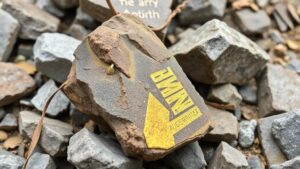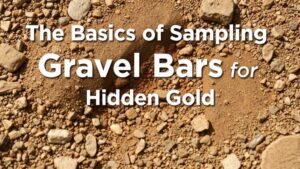Testing Tailings Piles for Hidden Silver and Other Valuable Minerals
Testing Tailings Piles for Hidden Silver and Other Valuable Minerals
Tailings piles, often seen as waste from mining operations, can hold hidden treasures, including valuable minerals like silver. Following effective testing methodologies can reveal the potential economic viability of these heaps, transforming liabilities into profitable opportunities. This article explores the processes, methodologies, and real-world applications involved in testing tailings piles for hidden minerals.
Understanding Tailings Piles
Tailings piles consist of the leftover material after the extraction of precious metals such as gold, silver, and copper from ore. residue is often viewed as a waste product, but these piles can accumulate significant quantities of metals that were not extracted during previous mining operations due to outdated technology or economic constraints.
The Importance of Testing Tailings Piles
Modern mining techniques and advancing technologies have made it economically feasible to re-evaluate tailings piles. Testing can unveil the presence of not only silver but also other valuable minerals, including:
- Gold
- Copper
- Zinc
- Rare Earth Elements
For example, the tailings from a silver mine in Nevada showed concentrations of over 0.5 oz/ton of silver, leading to renewed interest in the site and subsequent reprocessing efforts.
Testing Methodologies
There are several methodologies for testing tailings piles, each with its advantages and limitations. Common techniques include:
- Geochemical Analysis: Laboratory analyses of soil samples to identify metal concentration.
- Geophysical Methods: Utilizing electromagnetic and ground-penetrating radar techniques to map the subsurface and identify potential mineral deposits.
- Sampling Techniques: Systematic collection of samples from various depths and locations to create a comprehensive profile of the tailings composition.
Case Study: Tailings Assessment in Colorado
A recent assessment conducted in Colorado involved sampling tailings from an abandoned silver mine. testing revealed unexpectedly high levels of silver and small quantities of gold previously overlooked due to technological constraints at the time of initial operations. By employing modern geochemical techniques, the mine operators were able to propose a new extraction strategy that could yield significant profit, showcasing the economic potential locked within historical tailings.
Challenges in Testing Tailings Piles
While the potential for discovering valuable minerals in tailings piles is promising, several challenges need to be addressed:
- Environmental Concerns: Many abandoned mines pose environmental hazards that can complicate testing and reprocessing efforts.
- Technological Limitations: Although advancements have been made, certain methodologies may require expensive machinery and expertise that are not always readily available.
- Regulatory Hurdles: Resuming activities at former mining sites often requires navigating complex regulatory frameworks, which can delay operations.
Real-World Applications and Takeaways
The revitalization of interest in tailings piles has resulted in numerous operations worldwide that integrate testing into their strategies. By leveraging advancements in technology and methodologies, companies can assess the economic viability of tailings more effectively. Here are actionable takeaways:
- Conduct thorough geochemical analyses to ascertain the presence and concentration of valuable minerals.
- Use geophysical methods to enhance understanding of tailings pile composition and subsurface characteristics.
- Be mindful of environmental and regulatory challenges, incorporating sustainable practices into testing processes.
To wrap up, testing tailings piles for hidden minerals like silver represents both an environmental opportunity and an economic incentive. As technology advances, the feasibility of recovering valuable metals from these overlooked resources continues to improve, providing potential pathways for sustainable mining practices and resource management.


